
Shrubs Around Las Vegas, Vegetation Around Las Vegas
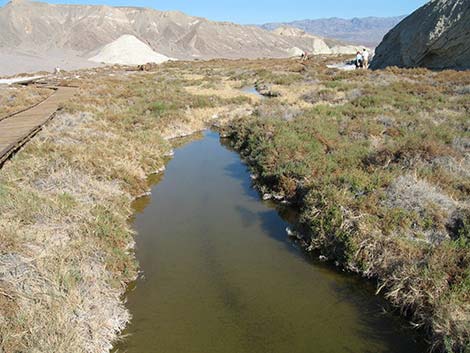 |
General: Iodinebush (Allenrolfea occidentalis), or pickleweed, is a dark-colored (from a distance), low-growing subshrub found in damp areas with salty soils. The stems are jointed, with each joint segment being 2-10 mm long. The entire stems are long and many-branched (almost vine-like), fleshy, green, looking somewhat like very thin pickles, hence one of the common the names: pickleweed. The leaves are tiny and obscure, emerging from between the joints. The stem branching pattern is alternate. Iodinebush (pickleweed) is an uncommon component of vegetation communities on damp, salty soils in desert flats areas in the Upper Sonoran (Mojave Desert Scrub) life zone. This is one of the few plants that can grow in the salty soils at the bottom of Death Valley. Family: Goosefoot (Chenopodiaceae). Other Names: Pickleweed. |
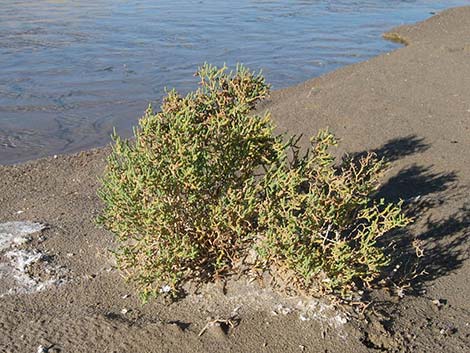 |
Plant Form: Subshrub; loose mat or low shrub of fleshy vine-like stems covering the ground. Height: Usually to about knee-high; to 6 feet. Bark: Green. Stems: Woody near the base, then fleshy, green, branched, jointed with internodes 0.2 to 0.8 inches apart. |
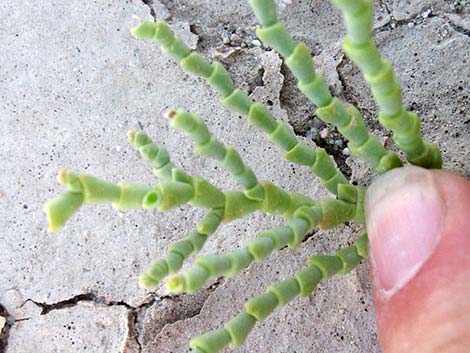 |
Leaves: Leaves sessile and scale-like. Flowers: Blooms during summer. Inflorescence: small flowers without petals spirally arranged on a short spike. Seeds: Habitat: Desert flats with damp, salty soils. Elevation: To about 4,000 feet. Distribution: California to Oregon, east to Idaho and Texas, south into northern Mexico. Look for this species in wet areas in Death Valley and Gold Butte. Comments: |
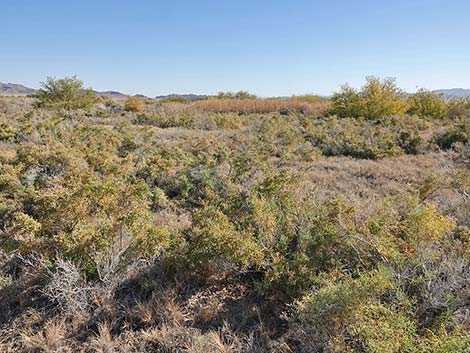 |
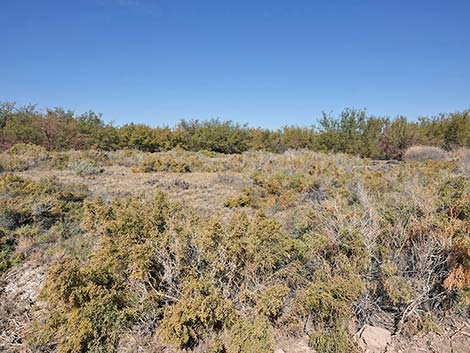 |
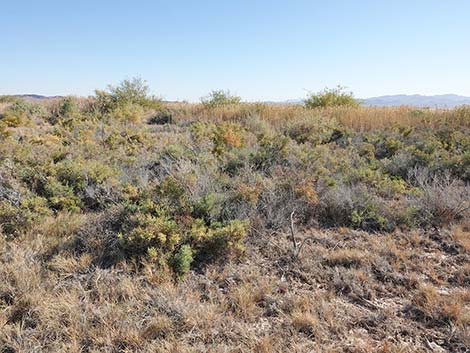 |
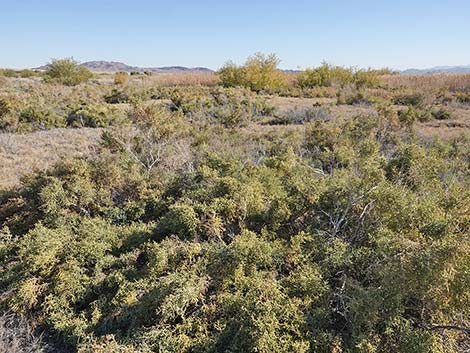 |
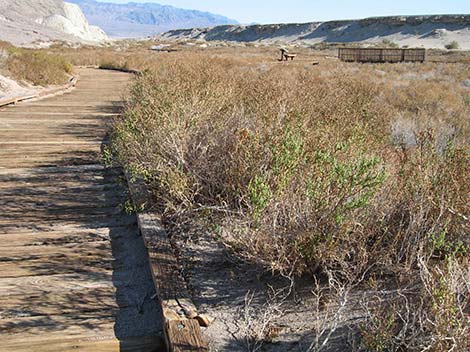 |
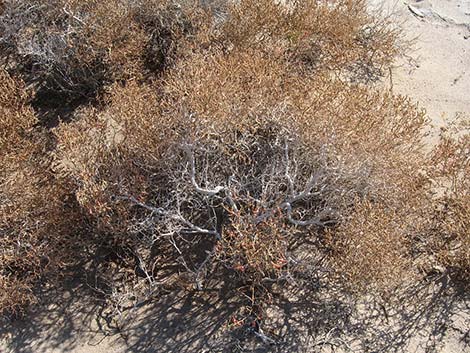 |
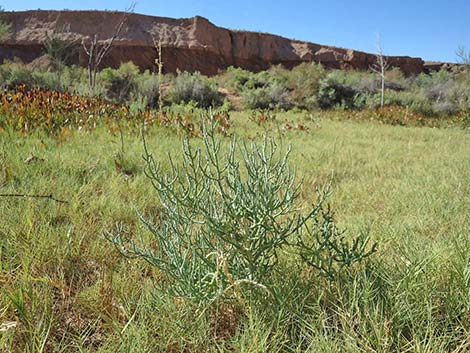 |
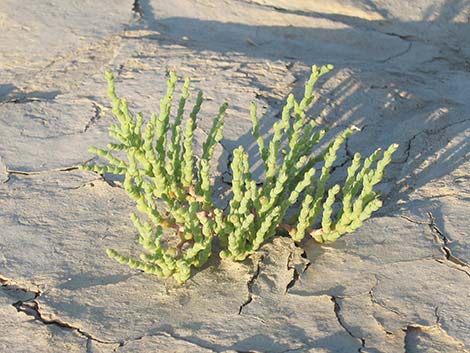 |
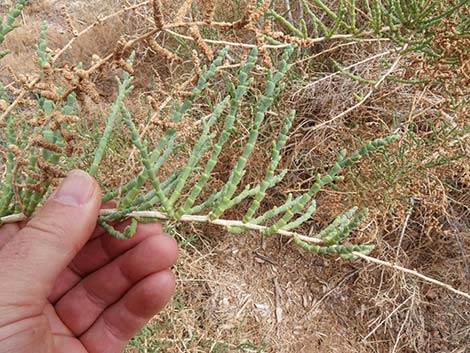 |
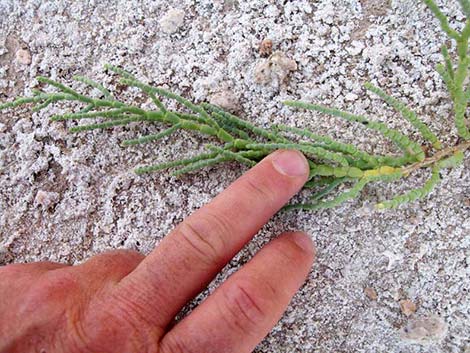 |
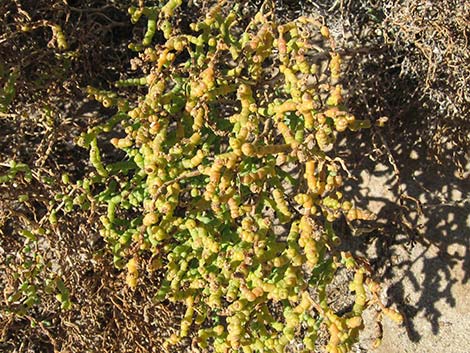 |
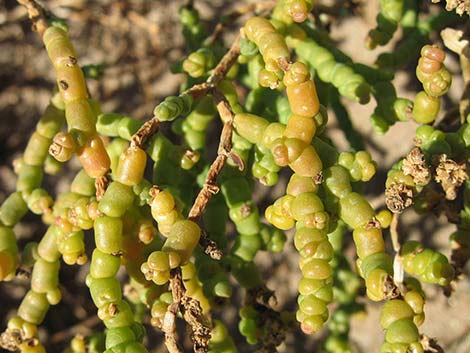 |
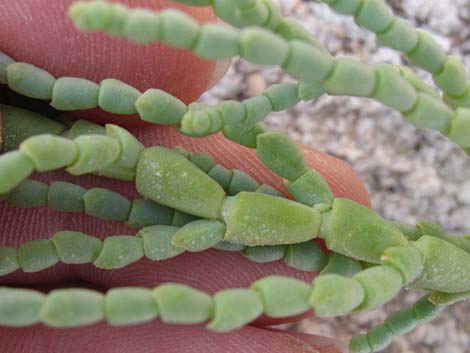 |
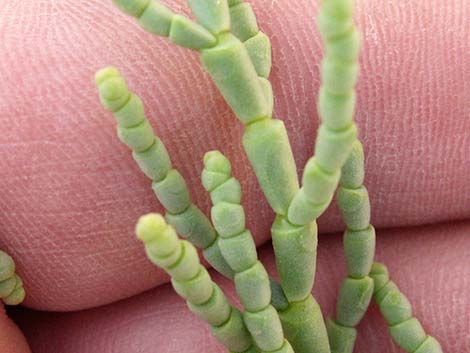 |
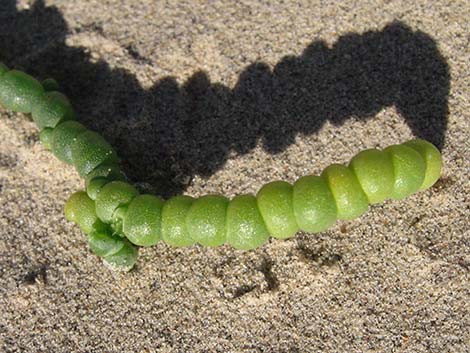 Swollen stem segments |
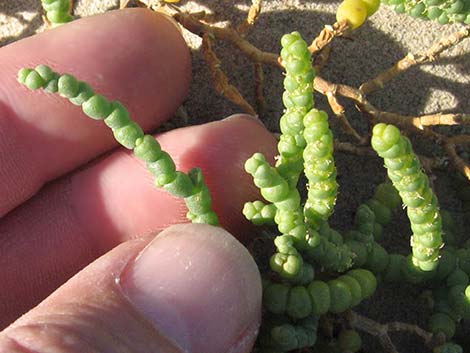 Flowers emerging from between stem joints |
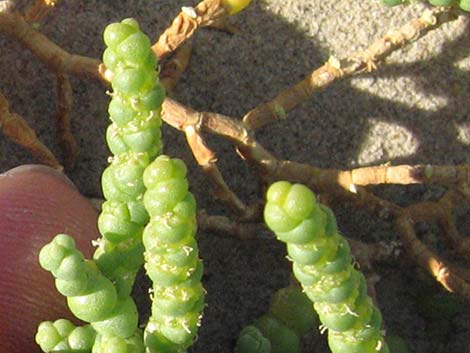 Flowers emerging from between stem joints |
 More to come ... |
Note: All distances, elevations, and other facts are approximate. Names generally follow the USDA database.
![]() ; Last updated 240912
; Last updated 240912
| All Shrubs | Plant Species Index | Glossary | Copyright, Conditions, Disclaimer | Home |